Documentation
Wireless power transfer (WPT) is revolutionizing how we interact with technology. It allows us to charge and power devices without the clutter of cables. This innovative approach is crucial in driving efficiency and sustainability in technology use, particularly in automotive, consumer electronics, and other sectors. As the world moves towards greener solutions, interest in and demand for WPT technology are on a steady rise.
SimScale offers powerful, easy-to-use online simulation tools that enable engineers and designers to explore, design, and refine WPT systems efficiently. With Time-Harmonic Magnetics, a feature of SimScale’s Electromagnetics solver, SimScale supplies engineers with cloud-native simulation capabilities for visualizing and analyzing the dynamics of wireless power transfer, helping optimize design, performance, and efficiency.
This article provides insights into WPT fundamentals, its diverse applications, and how SimScale’s cloud-native simulation platform makes wireless power simulation more accessible and practical.
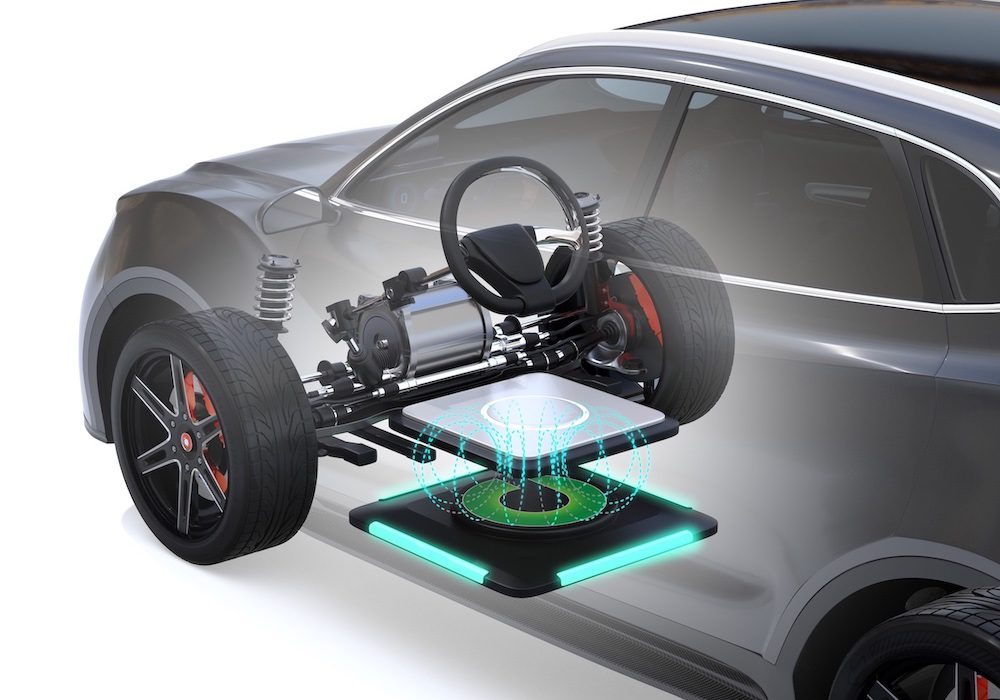
Wireless Power Transfer (WPT) technology facilitates the transmission of electrical energy without physical connections or wires. Also known as wireless charging, WPT offers a wireless solution for charging devices, eliminating the requirement for conventional power cords. As a result, products can become less intrusive and convoluted, rendering charging and powering devices convenient and efficient.
WPT utilizes several mechanisms based on electromagnetic fields and waves:
Let’s explore each mechanism in detail below.
Magnetic WPT is an innovative technology that enables the wireless transmission of electrical energy through magnetic fields. This approach is categorized mainly into two methods: Inductive Power Transfer (IPT) and Magnetic Resonance Coupling (MRC). Each serves different applications with distinct operational principles [1].
Grounded in electromagnetic induction, Inductive Power Transfer is a well-established method that has seen practical applications since the 1970s, with significant advancements made since 1991 at the University of Auckland. This technology forms the basis of wireless charging in devices ranging from cordless phone handsets to electric toothbrushes and has been pivotal in industrial applications like factory transport systems.
The principle of IPT involves generating a magnetic field through a current-carrying coil (primary side), which then induces a voltage in a nearby coil (secondary side) through electromagnetic induction. This induced voltage, in turn, generates a current in the secondary coil, enabling power transfer.
The governing equation for IPT is Faraday’s Law of Induction:
$$ EMF = – N \frac{d\phi}{dt} $$
Where \(EMF\) is the electromotive force induced in the receiver coil, \(N\) is the number of turns in the coil, and \(\frac{d\phi}{dt}\) is the rate of change of magnetic flux. Although IPT is highly efficient over short distances, its utility has been limited by the short transmission/reception distance.
The advent of magnetic resonance coupling (MRC) marked a significant leap forward, as demonstrated by a 2007 breakthrough from MIT. MRC utilizes the resonance phenomenon to enable highly efficient power transmission over distances up to 2 meters, vastly expanding WPT’s practical applications.
This method involves tuning the transmitter and receiver coils to the same resonant frequency, significantly enhancing efficiency and range. The resonant frequency is determined by:
$$ f_{res} = \frac{1}{2\pi\sqrt{LC}} $$
where \(f_{res}\) is the resonant frequency, \(L\) is the inductance of the coil, and \(C\) is the capacitance, forming an LC circuit that resonates at a specific frequency. MRC is particularly useful for applications where a slight physical separation between the energy source and load is impractical, such as electric vehicle charging stations or powering devices within the human body.
While IPT can efficiently transmit power over short distances without the need for resonance, achieving high efficiency and power over longer distances necessitates the introduction of resonance to counteract the inherent inductance in the coils. By incorporating capacitors to form a resonant LC circuit, MRC overcomes the limitations of leakage flux and inductance, paving the way for wireless power transmission that combines efficiency with practical distance.
Both IPT and MRC have laid the foundation for the widespread adoption and continuous innovation of WPT technologies. As we look towards a future of increased mobility and demand for convenient charging solutions, magnetic field coupling techniques stand at the forefront, promising to enhance and expand the capabilities of wireless power for a myriad of devices and applications.
Capacitive Wireless Power Transfer (CWPT) is a method of transmitting energy wirelessly using electric fields between conductive plates, a concept initially demonstrated by Nikola Tesla in 1891.
CWPT operates efficiently over short distances and is based on electric induction or capacitive coupling, where alternating current induces a displacement current across a dielectric medium situated between transmitter and receiver plates. The efficiency of CWPT is defined by the capacitance equation:
$$ C = \epsilon_T \epsilon_0 \frac{A}{d} $$
where \(C\) is the capacitance, \(\epsilon_T\) is the relative permittivity of the dielectric, \(\epsilon_0\) is the vacuum permittivity, \(A\) is the plate area, and \(d\) is the separation distance. This method is particularly advantageous for applications requiring minimal magnetic interference and high safety, such as consumer electronics, electrical machines, and biomedical devices. The electrode design and operating frequency are crucial factors influencing CWPT’s efficiency.
Historically, inductive power transfer (IPT) has seen more widespread application and commercialization than CWPT. This trend is attributed to IPT’s suitability for a broader range of distances and power levels. However, advancements in semiconductor power devices and tunable compensating networks have recently made CWPT systems more appealing for long-distance, high-power applications. CWPT is especially promising for electric vehicle wireless charging, showcasing a superior ability to reduce electromagnetic interference (EMI) shielding requirements due to the more directive nature of electric fields and greater robustness against misalignments between the transmitter and receiver. As technology evolves, CWPT will continue to be a competitive alternative to IPT, offering solutions where safety, device miniaturization, and reducing EMI are of paramount importance [2].
Radiative Wireless Power Transfer (RWPT) harnesses electromagnetic waves, notably in the microwave or radio frequency (RF) spectrum, to transmit energy over substantial distances.
Historically challenging due to efficiency issues in beam divergence and RF-DC conversion, RWPT has seen advancements like the highly efficient rectennas developed by William C. Brown in the 1970s, achieving over 90% efficiency. Recent research has focused on enhancing each part of the RWPT system — from DC-RF conversion through beam propagation to RF-DC conversion — to minimize efficiency losses and improve the system’s overall performance.
The appeal of RWPT, especially for far-field applications, is growing. It promises truly wireless operation for devices ranging from mobile phones to electric vehicles. This growth is driven by the potential for RWPT and energy harvesting methods to charge devices more efficiently and reduce reliance on environmentally unsustainable batteries. With ongoing improvements in system components and a better understanding of managing beam propagation and reception, RWPT is poised to play a crucial role in the future of wireless power transmission, offering a solution for long-distance energy transfer [3].
Optical Wireless Power Transfer (OWPT) uses laser beams to send energy across long distances without wires, standing out for its minimal electromagnetic interference (EMI). This method suits powering devices like drones and small gadgets efficiently and safely, thanks to advancements in laser and solar cell technologies. While the idea of OWPT dates back to the 1970s, recent improvements in efficiency, availability of high-power light sources, and safety measures have propelled it back into the spotlight. With better technology ensuring safe use and the increasing need for wireless solutions, OWPT is set to become a key player in the future of wireless power transmission [4].
Ultrasonic Wireless Power Transfer (UWPT) offers a novel approach to wirelessly transmit energy using ultrasound, which is particularly beneficial for powering devices in specialized environments like underwater or inside the human body, where electromagnetic methods are less effective.
UWPT uses transducers to convert electrical energy into ultrasonic vibrations, providing a safer alternative for internal medical devices by avoiding the risks associated with electromagnetic fields and invasive battery replacements. Although current UWPT systems show energy transmission efficiencies ranging from 20% to 40%, the method’s minimal impact on living tissues and potential for energy recycling in ubiquitous sound and vibration environments highlight its promise for future advancements in wireless power technology [5].
WPT methods have been used in various applications, from recharging smartphones to powering electric vehicles. The transmitted power can range from microwatts to several kilowatts. Below are some examples of application areas where WPT is employed.
In the industry, WPT offers durable solutions against the harsh conditions that typically damage traditional wiring. It not only boosts operational efficiency and safety but also curtails maintenance costs. The deployment of WPT in powering sensors and industrial robots exemplifies its role in enhancing safety and ensuring continuous monitoring, marking a significant step toward automating and optimizing industrial processes [6].
The introduction of WPT, especially in EV charging, has substantially transformed the automotive sector. This technology facilitates both stationary and dynamic charging, directly addressing range anxiety and user convenience concerns.
The rise of WPT in EVs exemplifies the shift towards more sustainable transportation methods, significantly contributing to the reduction of carbon emissions and fossil fuel dependence [7].
NASA’s exploration of WPT for space applications underlines its potential beyond Earth. The ability to transmit solar energy harvested by satellites to other satellites or back to Earth showcases WPT’s capability to support long-distance energy transfer, opening new avenues for energy distribution in space exploration and satellite operations [8].
The widespread adoption of WPT in consumer electronics has fundamentally changed how devices are powered. Wireless charging is now a standard feature for smartphones, laptops, and wearables. This shift enhances user convenience and aligns with environmental sustainability goals by potentially reducing the reliance on disposable batteries [9].
WPT offers revolutionary solutions for powering medical implants and devices in healthcare, providing a safer alternative to traditional wired power sources. This advancement improves patient mobility and comfort and facilitates the transmission of real-time health data, contributing to more personalized and effective treatments [10].
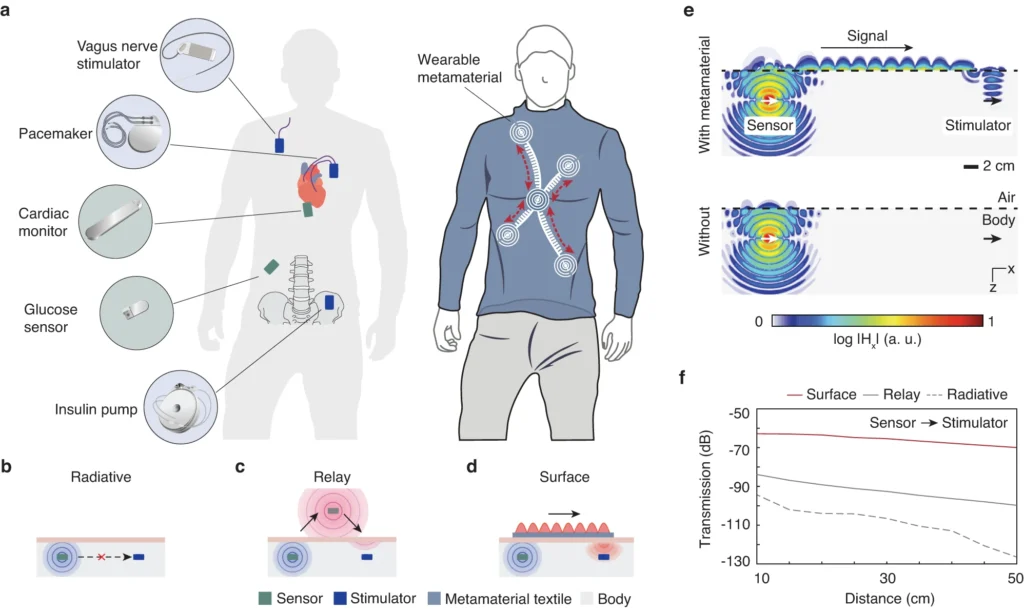
WPT is making significant strides towards sustainability and convenience in various sectors by promoting wireless charging. This innovation is cutting down on disposable batteries, thereby reducing electronic waste and fostering a move towards renewable energy, particularly in the automotive and consumer electronics industries.
The demand for WPT is surging, fueled by consumer desire for easier charging methods and supported by the growth of public EV charging infrastructure, including fast chargers. This movement is underscored by the fact that in 2022, the global number of EV charging points reached 2.7 million, a 55% increase compared to 2021. This illustrates the fast-paced development of the charging network to accommodate the EV revolution [11]. This statistic demonstrates market expansion and underlines WPT’s capacity to meet future energy demands.
WPT is set for more innovations aimed at improving efficiency, reducing costs, and expanding its range of applications. Integrating smart grids and exploring new WPT methods, such as ultrasonic and optical technologies, are expected to open up further research opportunities.
These advancements suggest a future where WPT is commonplace, supporting a broad spectrum of applications, from large-scale energy distribution to powering personal and medical devices. As WPT evolves, it promises to bring about a more sustainable, efficient, and interconnected world, driving innovation across various sectors and contributing to global sustainability efforts.
SimScale’s cloud-native simulation platform empowers engineers and designers to navigate the complexities of WPT systems by supporting the analysis and optimization of their design and performance. Among its suite of tools, the Time-Harmonic Magnetics feature is particularly instrumental for harnessing electromagnetic phenomena for WPT applications.
Wireless charging simulation is enabled by the Time-Harmonic Magnetics feature on SimScale, which offers a robust framework for simulating the dynamic interactions within WPT systems. This feature is grounded in the time-harmonic approximation of Maxwell’s equations, addressing electromagnetic fields that exhibit sine or cosine time dependencies.
The tool allows for a meticulous examination of how electric and magnetic fields interact across different scenarios, enabling engineers to accurately map out and visualize these interactions within various materials and geometrical configurations. Whether it is determining the optimal coil alignment for maximum power transfer or assessing the potential interference effects of surrounding materials, Time-Harmonic Magnetics offers a comprehensive simulation environment.
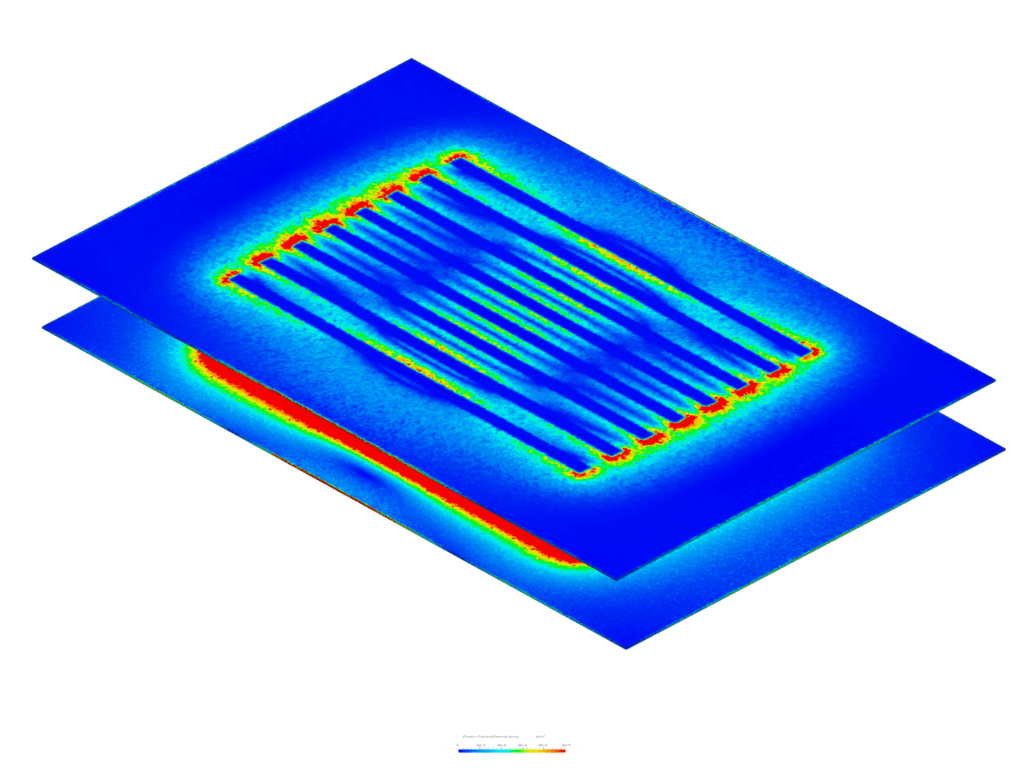
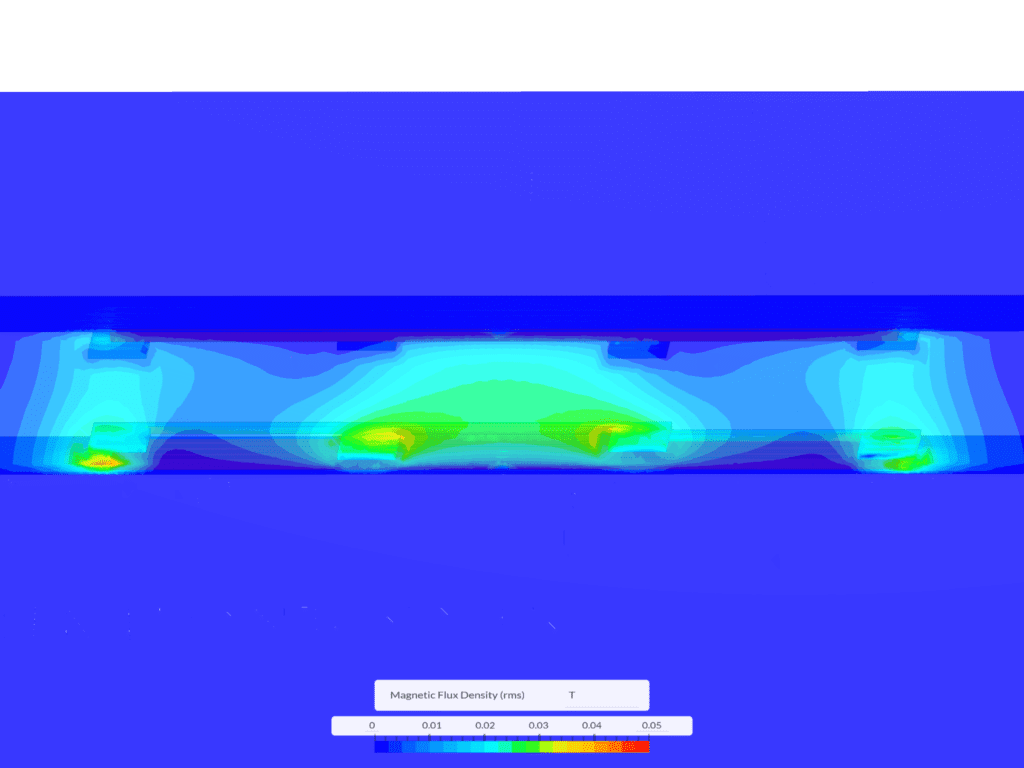
Integrating WPT simulations into the design process via SimScale brings several transformative benefits. It enables a profound understanding of the inner workings of WPT systems and the electromagnetic behavior underpinning successful energy transfer. This preemptive insight significantly diminishes the need for physical prototyping, leading to substantial cost savings and a quicker turnaround from concept to market-ready solutions. Moreover, SimScale’s inherent collaborative nature encourages real-time sharing and iteration of designs, fostering a dynamic environment for cross-team and cross-geographical design optimization.
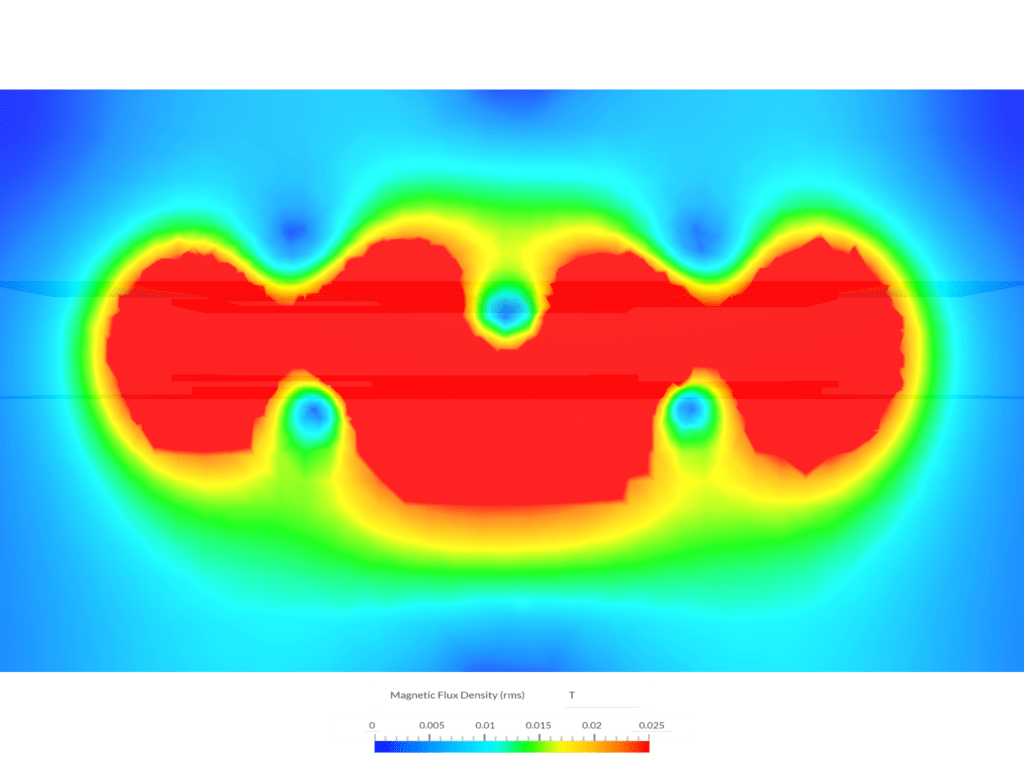
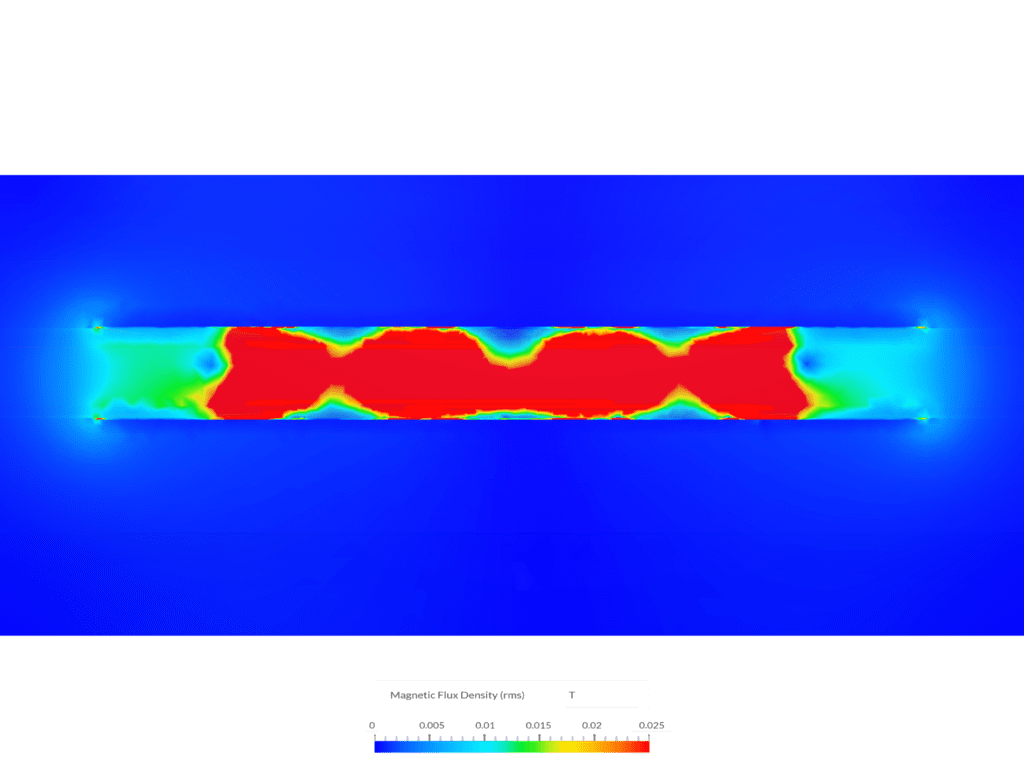
Engineers utilize the Time-Harmonic Magnetics simulations to confront and overcome the common hurdles WPT systems face, such as optimizing energy transfer and minimizing losses. Through SimScale, you can fine-tune coil configurations, test the effects of different materials, and adjust operational frequencies to enhance efficiency. The platform’s comprehensive analysis capabilities enable a deep dive into phenomena like eddy currents and the skin effect, which are crucial for refining your WPT design for peak performance and reliability.
The power of SimScale’s simulations to inform and guide the design process is transformative. Diving deep into the electromagnetic characteristics of WPT systems allows for innovation that pushes technological boundaries forward, creating more effective, compact, and secure wireless charging solutions. Simulations ensure data-driven decision-making, pinpoint potential issues early and guarantee that the end products are effective and perfectly tuned for practical application.
SimScale’s cloud-native simulation platform reinforces WPT system design, offering comprehensive electromagnetic simulations through the Time-Harmonic Magnetics feature. It also facilitates the exploration of thermal management features, enabling multiple physics analyses simultaneously in one place. Its accessibility, scalability, and collaborative tools streamline the optimization of wireless charging solutions, significantly reducing development time from concept to reality. Engineers can harness these advanced simulations to navigate the complexities of wireless power transfer with greater efficiency and precision. Discover more about SimScale’s electromagnetic and thermal simulation capabilities.
References
Last updated: May 13th, 2024
We appreciate and value your feedback.
What's Next
Power Electronics Simulation: An OverviewSign up for SimScale
and start simulating now